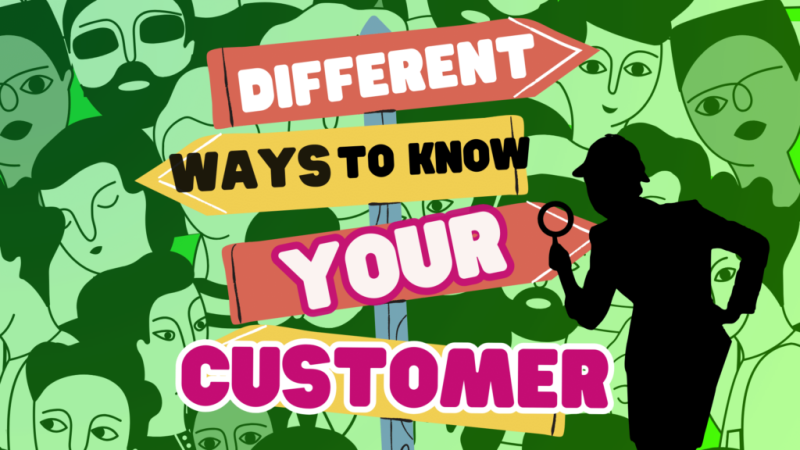Organizations have been taking their efforts toward Agility for many years. Some of them seem to be successful in this field, and some of them are not.
So, how to measure the results and benefits of this effort?
This question is often asked when I discuss the results or ongoing endeavors of the Agile Transformation with Management in organizations. Companies invest a lot in being Agile, however, they are only sometimes aware of what business agility means and what to expect.
Why is that?
The most common reason for such a situation is the lack of answers to the simple question: Why do we want to be Agile? The second reason is a poor understanding of what Agility is all about. Perhaps, there are more reasons. I will focus here on those I have met most frequently. Understanding these reasons will help us measure the success of the Agile Transformation.
I have tried to avoid the phrase “Agile transformation” in real-life situations because it should be a regular ongoing process for each organization. Adaptiveness. Fast reaction to market changes. Nowadays, organizations are in complex environments almost all the time. Therefore, the change process is constant (or should be) to better reflect market changes. Language matters. Although, for our mutual understanding, I would still employ this phrase in this article.
Why Agile?
Once you have your answers, setting up meaningful, valuable goals and metrics for the change will be easier. In the last paragraph, you can see the vague reasons for adapting Agility. Be aware.
Try to answer this question. Why does your organization want to be Agile? What are you going to achieve by this?
Examples of measuring the success of the Agile Transformation
What is the most important to observe any positive results of the “Agile Transformation”? Some indicators might help you measure, observe and make decisions based on data. Although your organization might have different reasons for adopting Agility, there are some common measures of success. I would suggest measuring a few factors, focusing only on one indicator, might lead to a trap. Consider using the Evidence-Based Management framework.
Let me start with some positive, real-life examples from my experience with organizations. Please note, that the situations described here, are only extracts from more complex transformations.
We want to improve our customers’/users’ satisfaction by addressing their satisfaction gaps.
This is a great motivation that Agility could address. This objective is measurable once it’s defined and customer-oriented. I observed that user-centric measures and goals might increase teams’ engagement and directly impact revenues. There are several research and reports that are aligned with my experience as well. You may take a look at another article I wrote about goals and relationships with customers/users.
We need to react faster to market needs.
This is a brilliant example, and Agility can answer this need. Partially, the measurement of success is almost ready here! Let’s assume that this organization has reacted so far slowly. It has been a year for their reaction to the market.
They started measuring Unrealized Value (satisfaction gap, market share) and Time to Market. It turned out that they needed to release small increments more frequently, test hypotheses, and react faster to trends.
We need to increase our revenue (organization level or a specific product)
Sometimes organizations consider Agility in order to increase profit. Business Agility might promise such an increase under several conditions (satisfied customers, responsiveness, etc.). Looking for money only, without other factors, could be risky. More about this topic you can read here. Absolutely, you have to measure your revenue! Businesses exist to make money; however, it is difficult without happy customers.
We want to increase our market share
Similarly to the previous one, consider other factors that might impact your market share.
We want to decrease costs (cost-saving or avoidance)
Agile Transformation can be costly. What about your current ineffective processes? What about your technology? Agile might reveal your organizational waste. If your transformational goal includes cost-savings, you are taking some specific actions to obtain it. You should see a desired trend over time. If not, please observe other measures and factors. Correct your actions. Measure again.

Additional, measurable “side-effects” when adopting Agility
- Accelerate Value Delivery
- Innovations
- Communication and shared understanding
- Goals achievement
- Product vs. project orientation (organizational structures change, simplification)
- Organizational culture shift
- Agile Leadership instead of transactional management
- Many more.
To summarize, measure a few meaningful metrics reflecting your transformational goals. Mostly in organizations, we pay attention to the following:
- Customer/user current satisfaction (outcomes)
- Revenue
- Market share
- Cost
- Cost saving/avoidance
- Customer/user satisfaction gap
- Employee satisfaction (happy employees, happy customers!)
- Time to Market (including time to pivot)
- Innovations
Note that your organization’s needs and your context might be slightly different. That’s why you need to honestly answer the question: Why Agile?
Don’t go there
I’ve noticed several traps after spending years with companies during their transformations.
It would be risky if you discover that you want to transform your organization because:
- You want to deliver things cheaper. Agile is not a guarantee for that.
- You want to control people better. Actually, Agile is all about empowering people.
- Scrum framework fits everywhere in the organization. Scrum is meant for complex domains. Not everyone in the organization has to work with Scrum. But yes, currently, the majority of the organizations are in complexity. Agility and empiricism might be right reactions to such an environment.
- Agile and Scrum are fashionable. Don’t go there. I have seen several situations where organizations were unsuccessful in achieving Agility because they thought they applied a few Agile practices and would work. It wouldn’t. A true understanding of Agility might help in this situation, not a fashion or what competitors claim.
- When are we going to finish our transformation? Remember, any change, any transformation, is a process. We want to be Agile and improve our Agility all the time. There is always something that might be implemented, then we reflect and adapt if needed. Goals achievement might help here. Continuous improvement.
- One measure can determine the success of the Agile Transformation. No. There are several indicators that might help better understand our situation.
Struggles
If you struggle with your transformation efforts, ask yourself:
- If the right people are involved? Do we miss decision-makers? This is the most common pitfall in companies’ attempts toward Agility! Lack of C-suite and directors engagement in changes. You can read here more about this topic.
- How do we behave? Does hierarchy matter? Organizational culture might also be a reason. Take a closer look at it.
- Do we change and experiment with our structures and processes? Agile adoption forces change in an organizational structure and simplification of processes. If you only converted some job titles and implemented tools (like Trello, Jira, Azure DevOps) or still working on projects instead of products, you would not observe positive, measurable benefits from Agility. The old structure remains the same.
- Do our teams deliver more features? Actually, Scrum and Agility are focused on value delivery, not just delivery. You can watch a short video about this topic here.
End note
Measure your results. Not only business KPIs but also your customers’ outcomes. Have meaningful, transformational goals. Experiment with new business opportunities and inside your organization. Learn from findings.
Remember, the Agile Transformation is a process. Don’t expect the end. This is a continuous improvement on the organizational level. Don’t create schedules or Gantt charts for this effort. Set up meaningful goals, measure, learn, pivot if needed, make decisions based on data, experiment, and adapt. Repeat.
This article was written by a human, me, not AI.


